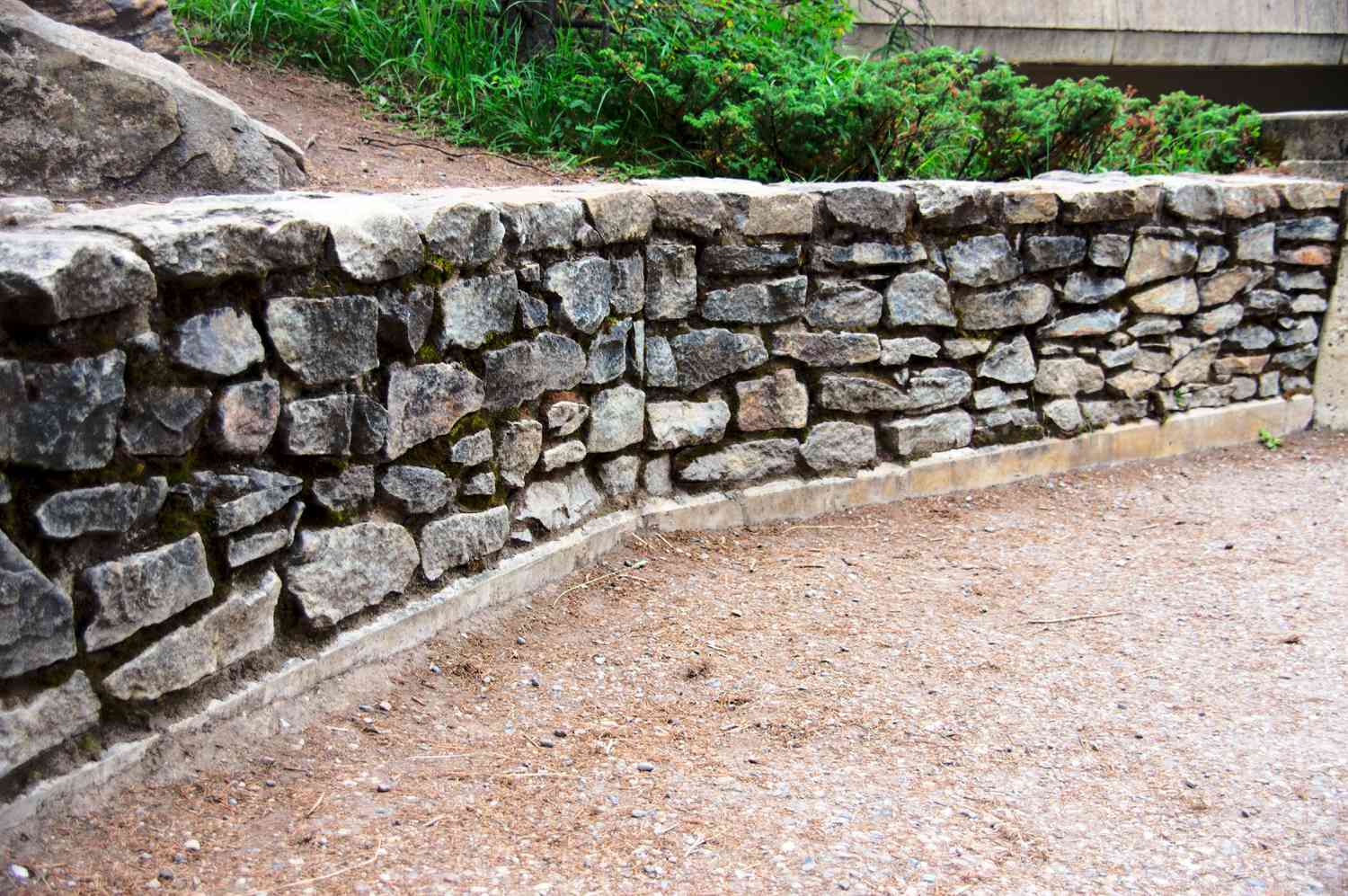Retaining walls are the unsung heroes of landscaping, silently shaping our built environment. These sturdy structures hold back soil on sloped terrain, creating level areas and preventing erosion. They are more than just functional elements – retaining walls can enhance the aesthetics of a landscape and even create new usable spaces. This article explores the different types of retaining walls, their benefits, and factors to consider when deciding if you need a retaining wall on your property.
Types of Retaining Walls: A Suitability Spectrum
The type of retaining wall best suited for your project depends on several factors, including the height of the wall, soil conditions, and aesthetic preferences:
- Gravity Walls: These classic walls rely on their weight to resist the pressure of the soil. Gravity walls are typically constructed from concrete blocks or stone, which is ideal for low-height applications.
- Cantilevered Walls: These L-shaped walls utilize a reinforced concrete base buried in the ground to hold back the soil. Cantilevered walls are suitable for moderate wall heights and offer a space-saving profile.
- Sheet Pile Walls: These walls utilize interlocking metal sheets driven into the ground. Sheet pile walls are ideal for tight spaces and limited excavation.
- Gabion Walls: These walls consist of wire baskets filled with stones. Gabion walls offer a natural aesthetic and good drainage properties, making them suitable for functional and decorative purposes.
Benefits of Retaining Walls: More Than Just Holding Back Soil
Retaining walls offer a multitude of advantages for residential landscapes:
- Preventing Erosion: On sloped landscapes, soil erosion can be a major concern. Retaining walls effectively hold back soil, safeguarding your property from erosion and potential damage.
- Creating Usable Space: By creating flat areas, retaining walls can transform unusable slopes into functional spaces like patios, gardens, or even additional living areas.
- Enhancing Drainage: Properly designed retaining walls can improve drainage by directing water runoff away from structures and preventing flooding.
- Adding Aesthetic Appeal: Retaining walls can be a beautiful landscape feature. The choice of material, colour, and texture can significantly enhance the overall aesthetic of your property.
Do You Need a Retaining Wall?
If you’re unsure whether a retaining wall is necessary for your landscape, consider these factors:
- Slope Grade: Steeper slopes require retaining walls to prevent soil erosion and potential safety hazards.
- Drainage Issues: If your property experiences excessive water runoff, a retaining wall can help redirect water flow and prevent flooding.
- Expansion Plans: If you have plans to expand your usable outdoor living space, a retaining wall can help create a level platform for patios, decks, or other features.
- Aesthetics: Remaining walls can add visual interest and definition to your landscape, even on gentle slopes.
Beyond Retaining Walls: Working with Professionals
While some retaining walls might seem like DIY projects, consulting a qualified landscaper or tree care professional is crucial. They can assess your needs, recommend the most suitable retaining wall type and ensure proper construction for optimal functionality and safety.
Conclusion
Retaining walls are more than just barriers – they are versatile tools for shaping your landscape. By understanding the different types of retaining walls and their benefits, you can unlock the potential of your sloped terrain when necessary. Consulting with professionals ensures a retaining wall that not only holds back the soil but also enhances the beauty and functionality of your property for years to come.





